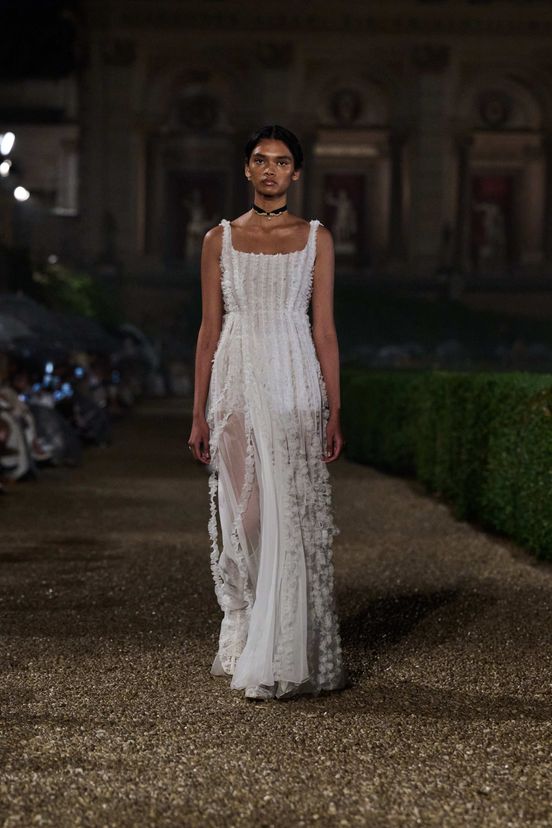During a regular fashion week, the (almost) only way to understand what a designer and their brand are trying to convey is through the set design, the runway, the makeup, the models, and the press release. It’s quick—a show might last 15 minutes—and then you’re onto the next one.
But during a Cruise show (which only a handful of brands do), the tempo is a little different. Guests spend two days immersed in the vision and tone the designer wants you to experience.
I’ll try to explain this in the simplest way possible:
From the chosen location—in this case, Rome, for the latest Dior Cruise show—to the curated activities before the show begins, the experience is deeply intentional. For Dior, guests were given an insider view into Maria Grazia Chiuri’s very own Rome.
To name a few: we visited Tirelli’s costume studio (for reference, Sofia Coppola’s Marie Antoinette costumes were made there, as was Claudia Cardinale’s dress from Visconti’s Il Gattopardo). We also had the chance to visit Maria Grazia Chiuri and her daughter’s “side” project (which was anything but minor!): the four-year renovation of the Teatro della Cometa, where I witnessed my first tableau vivant—and loved it!
I can’t not mention the Vatican Library and Maria Grazia’ Chiuri's En Route exhibition (open until the end of December!).
My point is: it’s fascinating how quickly you begin to understand what a designer is trying to express through these experiences—what they want you to feel, think, and remember.
We were fully immersed in Maria Grazia’s intimate roots and her hometown.
At 7:45 p.m., we all left our respective hotels dressed in white (an imposed dress code for the women, a nod to the White Ball that once by Mimì (below for reference) in 1930 and black for the men. We headed to Villa Albani Torlonia, which dates from 1747 and has only been opened 5 times to the public for an event.
The moment we stepped into the gardens, it was as mesmerizing and mystical as a dream. Dancers in masks performed in the alleyways, others did acrobatics in the trees, waiters in white tuxedos floated by, and a dark sky loomed overhead as Cold Works by DJ Karlblau blasted through the speakers.
It felt like a modern version of The Great Gatsby.
The atmosphere was electric. There was something so imposing about Villa Albani Torlonia—the grandeur of it all.
Guests took their seats as it began to rain (not exactly relevant, but worth the mention), and the models began to walk—slowly—through the enormous gardens.
The Dior woman under Maria Grazia Chiuri is always composed yet strong, with her head held high.
Not a heel in sight—comfort was at the forefront of the womenswear silhouette. Faces were given space to breathe, with braided buns and glowing, natural makeup. They looked like serene angels. Quite literally.
The show was inspired by “Mimì,” one of Dior’s patrons and best clients—Countess Anna-Laetitia Pecci-Blunt—and featured a mix of ready-to-wear and couture. There was plenty of lace (43%), many dresses (79%), and a touch of tailoring (14%). Feathered crowns and black lace eye bandages added a layer of mystery to the whole scene.
Compared to the last Cruise show in Edinburgh—where you instantly knew the looks would inspire premium brands everywhere—this show in Rome felt so elevated that only Dior, and Maria Grazia Chiuri, could pull it off. No imitation possible. A legacy, set to the highest standards.
Ciao 👋🏼



